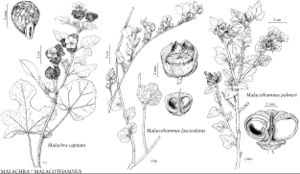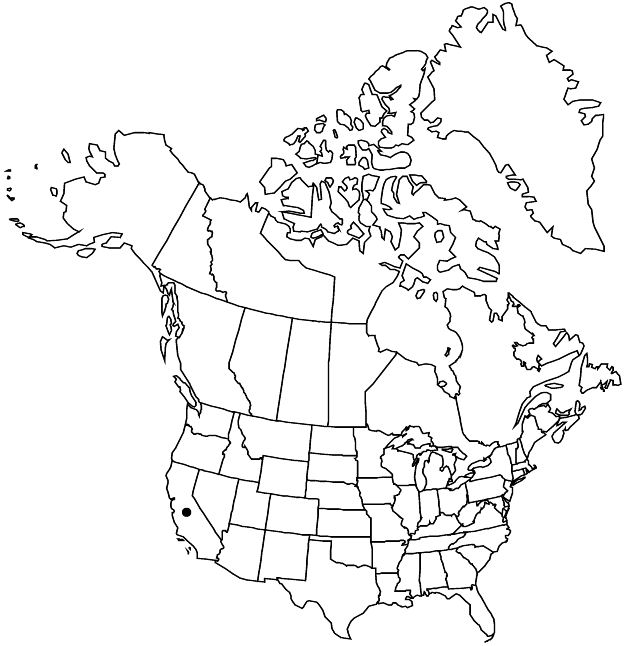Difference between revisions of "Malacothamnus palmeri"
Leafl. Bot. Observ. Crit. 1: 208. 1906.
FNA>Volume Importer |
imported>Volume Importer |
||
| (One intermediate revision by the same user not shown) | |||
| Line 76: | Line 76: | ||
|publication year=1906 | |publication year=1906 | ||
|special status=Endemic;Illustrated | |special status=Endemic;Illustrated | ||
| − | |source xml=https:// | + | |source xml=https://bitbucket.org/aafc-mbb/fna-data-curation/src/2e0870ddd59836b60bcf96646a41e87ea5a5943a/coarse_grained_fna_xml/V6/V6_521.xml |
|subfamily=Malvaceae subfam. Malvoideae | |subfamily=Malvaceae subfam. Malvoideae | ||
|genus=Malacothamnus | |genus=Malacothamnus | ||
Latest revision as of 22:21, 5 November 2020
Shrubs, 1.5–2.5 m, branches stout, indument white-canescent, grayish, or tawny, sparse to dense, stellate hairs sessile or stalked, glandular and 1–few-armed hairs sometimes also present, arms to 3 mm. Leaf blades ovate to broadly ovate, unlobed or 3- or 5-lobed, to 7–8 cm, thin or thick, surfaces: sparsely to densely grayish- to tawny-hairy, basal sinus open, not overlapping. Inflorescences terminal, headlike or, sometimes, short-spicate, flower clusters sessile, densely flowered, subtended by conspicuous bracts; stipules marginally connate, enclosing young flower clusters; involucellar bractlets distinct, sometimes basally adnate to calyx, linear to lanceolate, 8–16(–21) × 1–3(–5) mm, 2/3 –1 1/3 times calyx length. Flowers: calyx (8–)10–16(–20) mm, lobes ovate to deltate-lanceolate, 5–15 × 2.5–5.5 mm, ca. 2 times as long as wide, slightly exceeding to 4 times tube length, apex acuminate, grayish- to tawny-hairy, hairs stellate, arms to 3.5 mm and sometimes simple-glandular; petals rose-pink or pale pink to nearly white, 1.4–2(–3) cm. Mericarps 2.5–4(–5) mm. 2n = 34.
Phenology: Flowering Mar–Jul.
Habitat: Chaparral
Elevation: 30–800 m
Discussion
Malacothamnus palmeri occurs in the central, outer Coast Ranges; its morphology is variable. Plants from Jolon and the Carmel Valley, Monterey County, have been called var. involucratus; they are recognized by cordate leaves, sparse indument (leaves adaxially glabrate), broad bracts to 20 mm wide subtending and partially enclosing the young flower clusters, relatively broad involucellar bractlets, calyx measurements in the lower range (to 1.5 cm), and nearly white petals 1–3 cm. They intergrade with the typical form and, in plants with short-spicate inflorescences, approach M. aboriginum. Plants from near Arroyo Seco, Monterey County, with simple and glandular hairs and generally darker rose petals have been named var. lucianus; they are otherwise similar to the typical variety.
Selected References
None.

